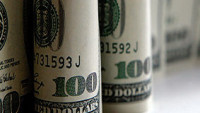 The Bank of Canada left monetary unchanged at its meeting in December 2017. At the same time, the regulator allows the possibility of rate hikes at the beginning of 2018.
The Bank of Canada left monetary unchanged at its meeting in December 2017. At the same time, the regulator allows the possibility of rate hikes at the beginning of 2018.
Bank of Canada Governor Stephen Poloz gave some hawkish comments in his recent speech. According to him, growth is seen to continue above potential, posing an upside risk to the inflation forecast. He also described the current monetary policy as “quite stimulative”. Such comments inspired expectations that further monetary policy tightening in Canada will come relatively soon. The probability of a rate hike in January is now estimated by 35%.
According to the Organization for Economic Cooperation and Development (OECD), Canada’s growth rate will lead the G7 industrialized democracies this year at 3% before sliding to 2.1% in 2018. The nation’s economy was boosted by a heated housing market and increasing indebtedness of households. It seems to have some strong foundations: strong domestic demand, improving business activity and high employment.
Canadian inflation stays below the target level. Yet, the Bank of Canada seems to think that this may be explained by the impact of temporary factors, such as persistent excess capacity in the economy. As energy prices turn up, inflation will start doing so as well.
However, future economic dynamics is not without risks. Household debt reached 171.1% of income in the third quarter. The main one is the potential end of the North American Free Trade Agreement (NAFTA). The US has threatened to pull out of it unless Canada and Mexico agree to major concessions. If it happens, the Canadian dollar would greatly suffer, as 75% of Canadian export goes to the United States. In addition, tighter mortgage rules will start acting in January and it’s yet to be seen how the economy reacts to the two rate hikes of 2017.
“Given the unusual factors at play, the bank is monitoring these risks in real time – the term we use for this is data dependent – rather than taking a mechanical approach to policy setting,” Poloz said.
It was a volatile year for USD/CAD. The pair initially strengthened to almost 1.3800 in April, but then fell to 1.2060 in September. In the final months of 2017, the Canadian dollar has once again been weakening, so USD/CAD managed to rise to 1.2800.













